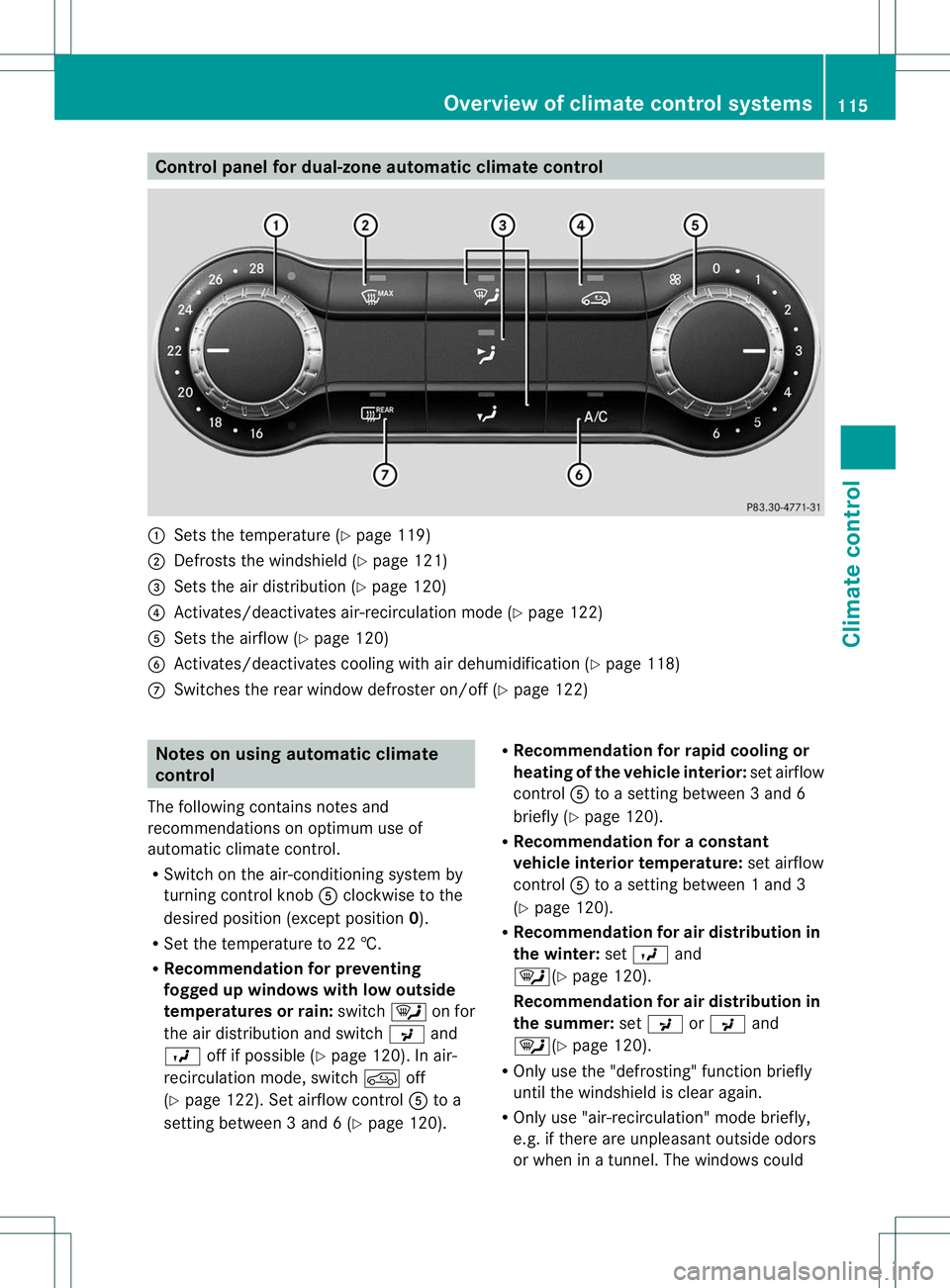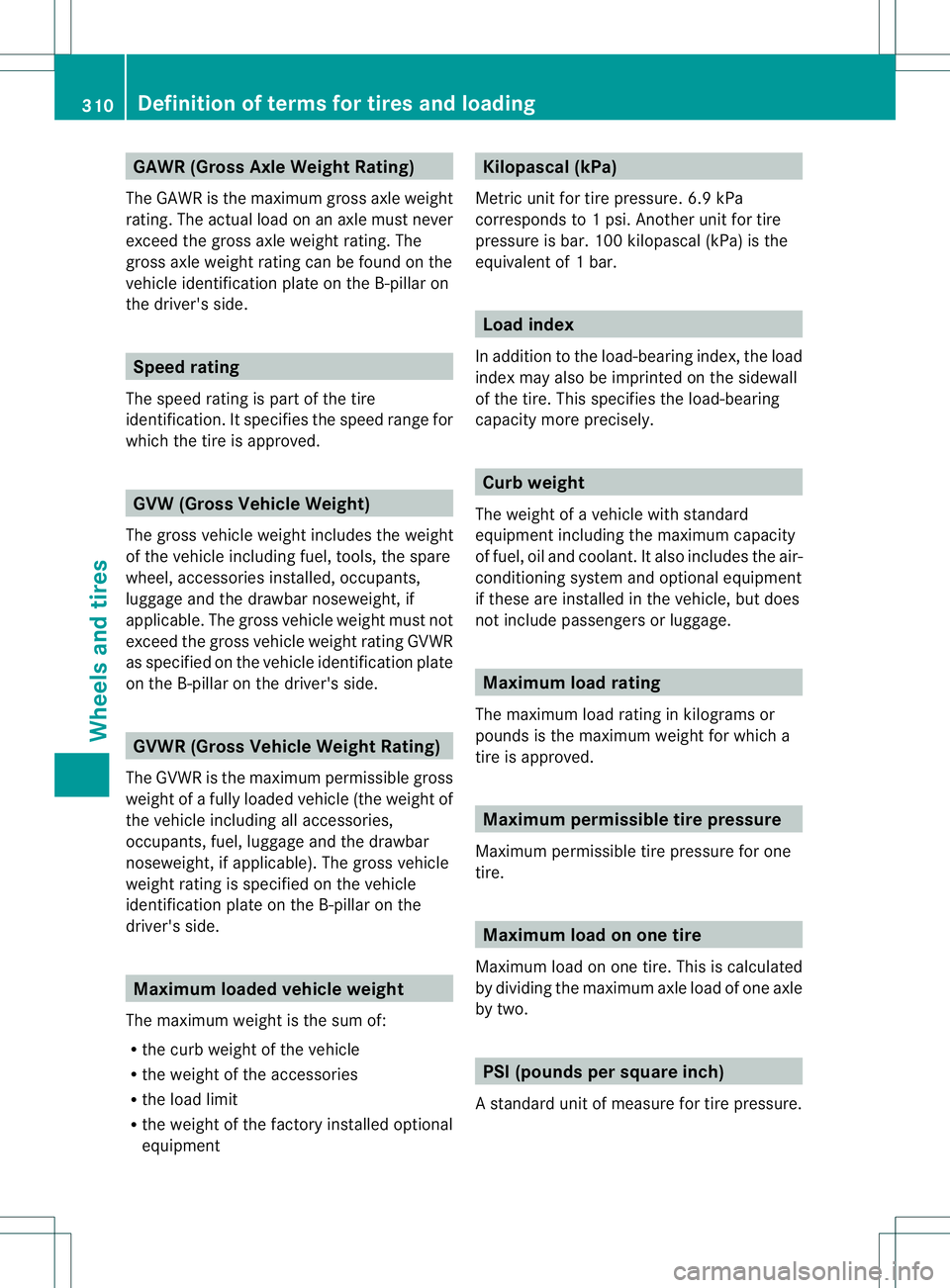2013 MERCEDES-BENZ B-CLASS SPORTS air conditioning
[x] Cancel search: air conditioningPage 7 of 336

1, 2, 3 ...
12 Vsocket
see Sockets A
ABS (Anti-lock Braking System) Display message ............................ 194
Function/notes ................................ 59
Important safety notes ....................59
Warning lamp ................................. 220
Activating/deactivating cooling
with air dehumidification .................118
Active Parking Assist Display message ............................ 211
Function/notes ............................. 165
Important safety notes ..................164
Active Service System
see ASSYST PLUS
ADAPTIVE BRAKE ................................. 64
Adaptive Brake Assist Display message ............................ 201
Function/notes ................................ 61
Adaptive brake lamps .........................63
Adaptive Highbeam Assist Display message ............................ 206
Function/notes ............................. 100
Switching on/off (on-board
computer) ...................................... 190
Additional speedometer ...................189
Additives (engine oil) ........................327
Airb ags
Deployment ..................................... 37
Front air bag (driver, front
passenger )....................................... 41
Important safety notes ....................39
Knee bag .......................................... 42
Safety guidelines ............................. 38
Side impact airb ag.......................... 42
Windo wcurtain air bag .................... 42
Air-conditioning system
see Climate control
Airv ents
Important safet ynotes .................. 123
Rea r............................................... 124
Setting ........................................... 123Setting the center air vents
...........123
Setting the side air vents ...............124
Alarm system
see ATA (Anti-Theft Alarm system)
Anti-loc kbraking system
see ABS (Anti-lock Braking System)
Anti-theft alarm system
see ATA (Anti-Theft Alarm system)
Anti-theft system
Interio rmotion sensor ..................... 66
Ashtray ............................................... 242
Assistance menu (on-board
computer) .......................................... 187
ASSYST PLUS Displaying a service message ........264
Hiding a service message ..............264
Notes ............................................. 264
Resetting the service interval
display. .......................................... 264
Service message ............................ 264
Special service requirements ......... 265
ATA (Anti-Theft Alarm system)
Activating/deactivating ...................65
Function .......................................... .65
Switching off the alarm ....................65
ATTENTIO NASSIST
Activating/deactivating .................188
Display message ............................ 209
Function/notes ............................. 171
Audio menu (on-board computer) ....185
Audio system see separate operating instructions
Authorized Centers
see Qualified specialist workshop
Authorized Mercedes-Benz Center
see Qualified specialist workshop
Authorized workshops
see Qualified specialist workshop
AUTO lights
Display message ............................ 205
see Lights
Automatic engine start (ECO start/
stop function) .................................... 129
Automatic engine switch-off (ECO
start/stop function) ..........................129
Automatic headlamp mode ................97 4
Index
Page 118 of 336

Control panel for dual-zone automatic climate control
:
Sets the temperature (Y page 119)
; Defrosts the windshield (Y page 121)
= Sets the air distribution (Y page 120)
? Activates/deactivates air-recirculation mode (Y page 122)
A Sets the airflow (Y page 120)
B Activates/deactivates coolin gwith air dehumidification ( Ypage 118)
C Switches the rear window defroster on/off (Y page 122)Notes on using automatic climate
control
The following contains notes and
recommendations on optimum use of
automatic climate control.
R Switch on the air-conditioning system by
turning control knob Aclockwise to the
desired position (except position 0).
R Set the temperature to 22 †.
R Recommendation for preventing
fogged up windows with low outside
temperatures or rain: switch¯on for
the air distribution and switch Pand
O off if possible (Y page 120). In air-
recirculation mode, switch doff
(Y page 122). Set airflow control Ato a
setting between 3 and 6 (Y page 120).R
Recommendation for rapid cooling or
heating of the vehicle interior: set airflow
control Ato a setting between 3 and 6
briefly (Y page 120).
R Recommendation for a constant
vehicle interior temperature: set airflow
control Ato a setting between 1 and 3
(Y page 120).
R Recommendation for air distribution in
the winter: setO and
¯(Y page 120).
Recommendation for air distribution in
the summer: setP orP and
¯(Y page 120).
R Only use the "defrosting" function briefly
until the windshield is clear again.
R Only use "air-recirculation" mode briefly,
e.g. if there are unpleasan toutside odors
or when in a tunnel. The windows could Overview of climate control systems
115Climate control Z
Page 132 of 336

Automatic engine switch-off
General notes
The ECO start/stop function is operational
and the
¤symbol is displayed in the
multifunction display, if:
R the indicator lamp in th eECO butto nis lit
green.
R the outside temperature is within the
comfort range.
R the engine is at normal operating
temperature.
R the set temperature for the vehicle interior
has been reached.
R the battery is sufficiently charged.
R the system detects that the windshield is
not fogged up when the air-conditioning
system is switched on.
R the hood is closed.
R the driver's door is closed and the driver's
seat belt is fastened.
If conditions for automatic engine switch-off
have not been fulfilled, the ¤symbol will
not be shown.
i All of the vehicle's systems remain active
when the engine has been stopped
automatically.
i The engine can be switched off
automatically a maximum of four times
(first stop and three subsequent stops) in
succession. Automatic engine switch-off is
possible againo nce the ECO symbol
appears in the multifunctio ndisplay.
i During automatic engine switch-off, the
climate control system only operates at a
reduced capacity. If you require full climate
control capacity, the ECO start/stop
function can be deactivated by pressing the
ECO button (Y page 130).
Vehicles with automatic transmission
If the vehicle is braked to a standstill in Dor
N, the ECO start/stop function switches off
the engine automatically. i
You can still activate the HOLD function
when the vehicle is stationary, even if the
engine has been switched off
automatically. It is then not necessary to
continue applying the brakes during the
automatic stop phase. When you depress
the accelerator pedal, the engine starts
automatically and the braking effect of the
HOL Dfunction is deactivated. Depress the
accelerato rpedal carefully, as the engine
must be started first.
Automatic engine start General notes
The engine starts automatically if:
R
you switch off the ECO start/stop function
by pressing the ECO button.
R you engage reverse gear R.
R the vehicle starts to roll.
R the brake system requires this.
R the temperature in the vehicle interior
deviates from the set range.
R the system detects moisture on the
windshield when the air-conditioning
system is switched on.
R the charge level of the battery is too low.
R the driver's seat belt is removed or the
driver's door is opened.
Vehicles with automatic transmission
The engine is started automatically if you:
R release the brake pedal when HOLD is not
activated and the transmission is in
position Dor N
R depress the accelerator pedal
R move the transmission out of position P.
i Shifting the transmission to position P
does not start the engine.
i If you shift the transmission from Rto D,
the ECO start/stop function is available
again as soon as the ¤symbol
reappears in the multifunction display. Driving
129Driving and parking Z
Page 313 of 336

GAWR (Gross Axle Weight Rating)
The GAWR is the maximu mgross axle weight
rating. The actual load on an axle must never
exceed the gross axle weight rating. The
gross axle weight rating can be found on the
vehicle identification plate on the B-pillar on
the driver's side. Speed rating
The speed rating is part of the tire
identification. It specifies the speed range for
which the tire is approved. GVW (Gross Vehicle Weight)
The gross vehicle weight includes the weight
of the vehicle including fuel, tools, the spare
wheel, accessories installed, occupants,
luggage and the drawbar noseweight, if
applicable.T he gross vehicle weight must not
exceed the gross vehicle weight rating GVWR
as specified on the vehicle identification plate
on the B-pillar on the driver's side. GVWR (Gross Vehicle Weight Rating)
The GVWR is the maximum permissible gross
weight of a fully loaded vehicle (the weight of
the vehicle including all accessories,
occupants, fuel, luggage and the drawbar
noseweight, if applicable). The gross vehicle
weight rating is specified on the vehicle
identification plate on the B-pillar on the
driver's side. Maximum loaded vehicle weight
The maximum weight is the sum of:
R the curb weight of the vehicle
R the weight of the accessories
R the load limit
R the weight of the factory installed optional
equipment Kilopascal (kPa)
Metric unit for tire pressure. 6.9 kPa
corresponds to 1 psi. Another unit for tire
pressure is bar. 100 kilopascal (kPa) is the
equivalent of 1bar. Load index
In addition to the load-bearing index, the load
index may also be imprinted on the sidewall
of the tire. This specifie sthe load-bearing
capacity more precisely. Curb weight
The weight of a vehicle with standard
equipment including the maximum capacity
of fuel, oil and coolant. It also includes the air-
conditioning system and optional equipment
if these are installed in the vehicle, but does
not include passengers or luggage. Maximum load rating
The maximum load rating in kilograms or
pounds is the maximum weight for which a
tire is approved. Maximum permissible tire pressure
Maximum permissible tire pressure for one
tire. Maximum load on one tire
Maximum load on one tire. This is calculated
by dividing the maximum axle load of one axle
by two. PSI (pounds per square inch)
As tandard uni tofmeasure for tire pressure. 310
Definition of terms for tires and loadingWheels and tires